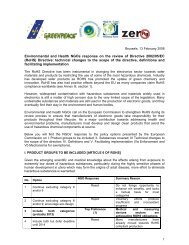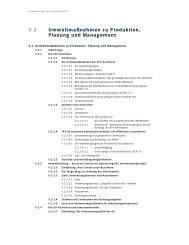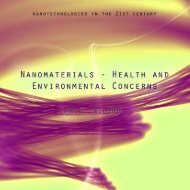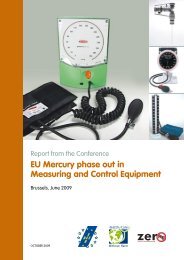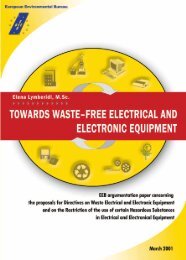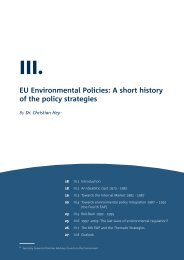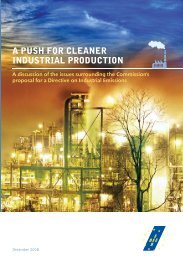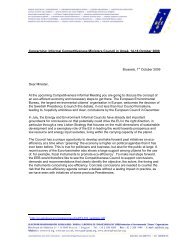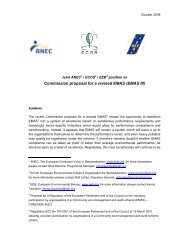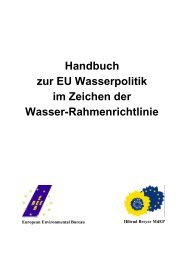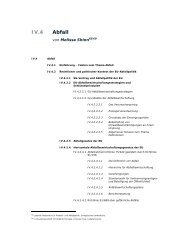Memorandum to Czech Presidency and Ten Test - EEB
Memorandum to Czech Presidency and Ten Test - EEB
Memorandum to Czech Presidency and Ten Test - EEB
- No tags were found...
Create successful ePaper yourself
Turn your PDF publications into a flip-book with our unique Google optimized e-Paper software.
<strong>EEB</strong> <strong>Memor<strong>and</strong>um</strong> <strong>to</strong> the <strong>Czech</strong> EU <strong>Presidency</strong>imposing a flat <strong>and</strong> undifferentiated fee <strong>to</strong> all producers, which would createserious barriers <strong>to</strong> the implementation of individual producer responsibility.Requiring producers <strong>to</strong> be fully financially responsible for the collection ofWEEE from households. Producers should pay for full collection costs <strong>and</strong>not only the costs of collection from points of deposition onwards. In order <strong>to</strong>prevent abuses, this should be complemented with mechanisms forproducers <strong>to</strong> question <strong>and</strong> control abuses of costs.- Clearly re-establishing the objectives <strong>to</strong> prevent, reuse <strong>and</strong> recycle WEEEin Article 1 <strong>and</strong> ensuring that improvements on Ecodesign focus on reuse<strong>and</strong> recycling <strong>and</strong> not “recovery” as proposed in the new article 4.Stronger drivers for reuse should also be introduced through dedicatedreuse targets.7.10. RoHS RecastWidespread contamination by hazardous substances <strong>and</strong> materials used inelectrical <strong>and</strong> electronic equipment is still a matter of high concern due <strong>to</strong> thelimited scope of the restriction of the use of certain hazardous substances inelectrical <strong>and</strong> electronic equipment (RoHS) legislation. Not only are manyundesirable substances <strong>and</strong> materials still used in products but other harmfulsubstances, such as dioxins <strong>and</strong> furans, are generated in these products duringrecycling <strong>and</strong> disposal at end of life, much of which still takes place in backyardworkshops in developing countries. These hazardous substances have beenrecognised as priority contaminants in the S<strong>to</strong>ckholm Convention, which seeks <strong>to</strong>eliminate persistent organic pollutants from the global environment.Together with the WEEE Proposal, the Commission published a proposal for arecast of the Directive on RoHS on 3 rd December 2008.We expect the <strong>Czech</strong> <strong>Presidency</strong> <strong>to</strong> make a positive contribution <strong>to</strong> improving theproposal, which is crucially needed. No new substances were proposed forbanning in the new proposal <strong>and</strong> it is suggested that the assessment ofsubstances <strong>to</strong> be restricted would be undertaken under a modified procedureaccording <strong>to</strong> REACH, which would be further defined by the Commission.The REACH Authorisation process is still in its early development stages <strong>and</strong> it ishighly uncertain if <strong>and</strong> how REACH will address chemicals relevant <strong>to</strong> theelectronics sec<strong>to</strong>r. REACH also fails <strong>to</strong> address all the life-cycle impacts ofchemicals, especially related <strong>to</strong> end of life. On the other h<strong>and</strong>, RoHS provides aclear timeline for signalling when newly identified hazardous chemicals need <strong>to</strong>be replaced by safer alternatives. Electronics companies <strong>to</strong>day have introduced aframework <strong>to</strong> comply with RoHS. Accordingly, the companies affected by RoHS37



